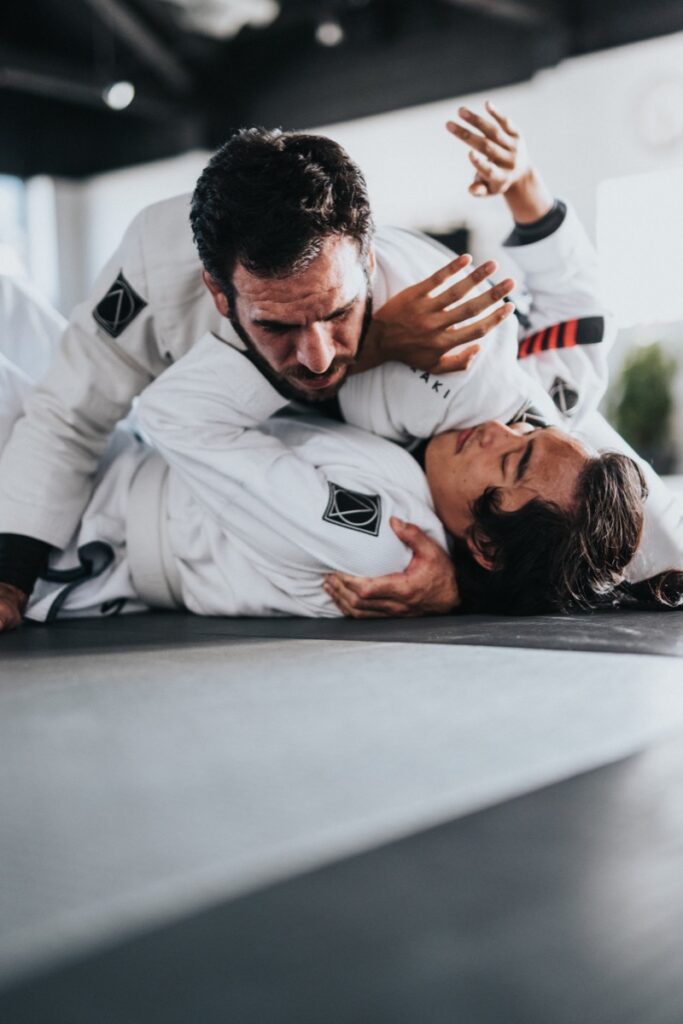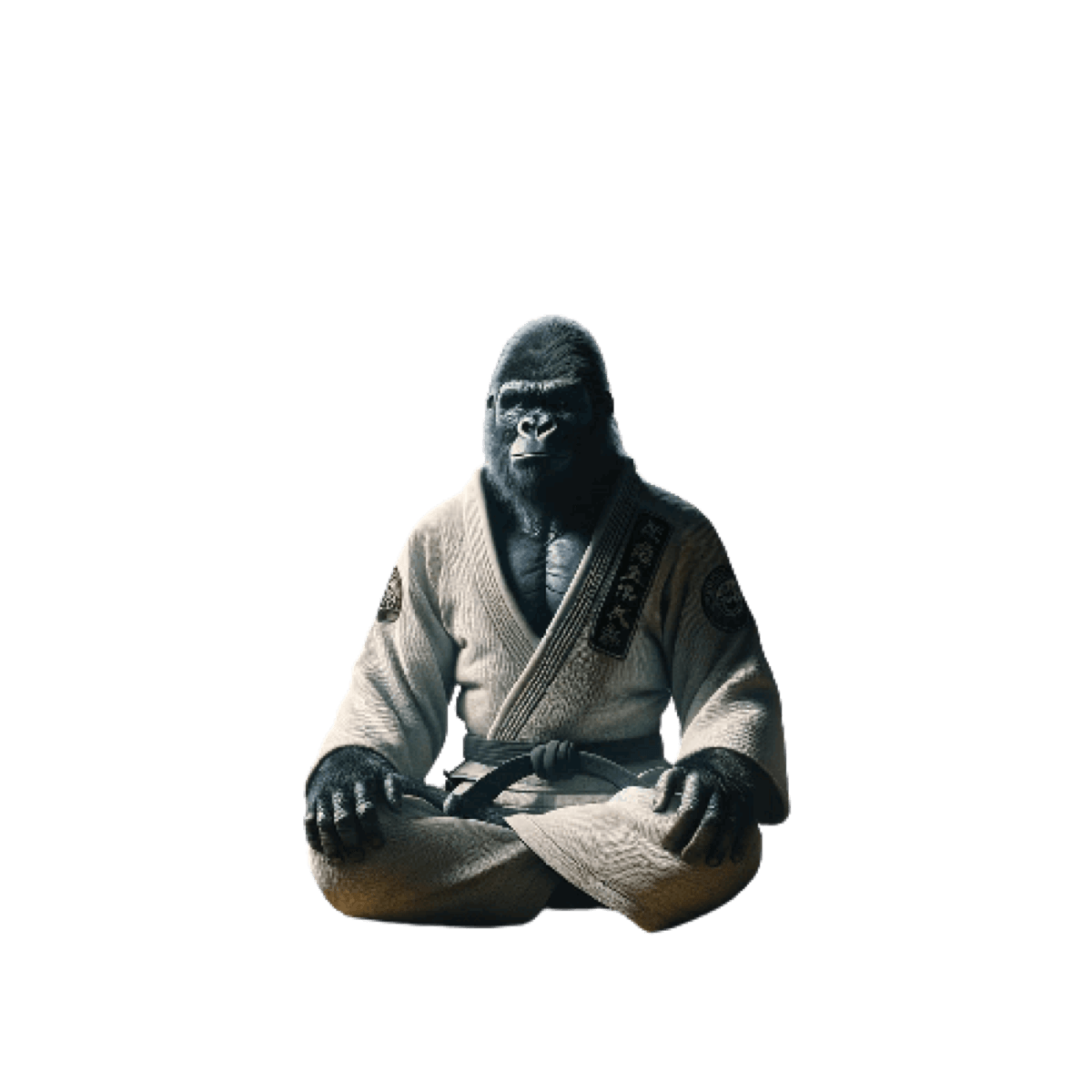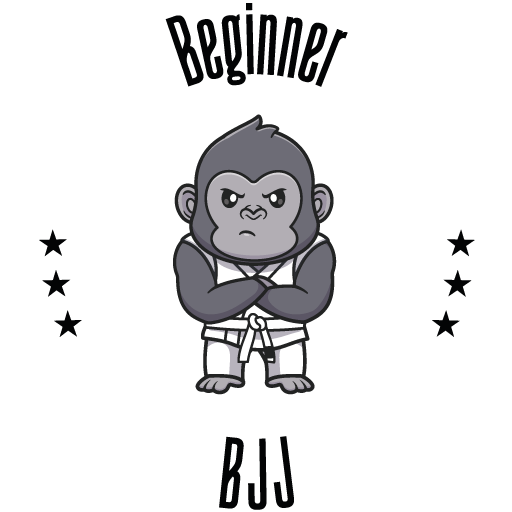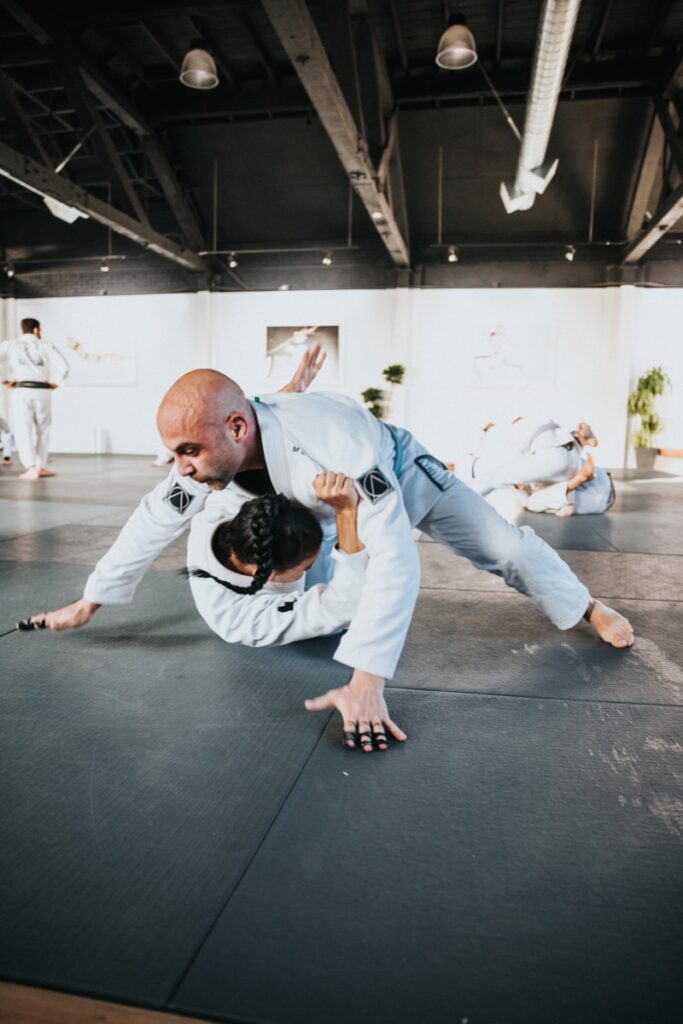Menu
Close
Master the Basics of Brazilian Jiu-Jitsu
Welcome to the vibrant world of Brazilian Jiu-Jitsu (BJJ)—a martial art form that marries technique, strength, strategy, and spirit.
Emerging from the bustling streets of Brazil and steeped in the ancient practices of Judo and traditional Japanese Jujutsu, BJJ has grown into a globally celebrated discipline. It’s more than just a physical endeavour—a personal growth, resilience, and community journey.
At its core, basics of BJJ is an art of ground fighting, focusing on leverage and technique rather than brute strength. BJJ’s philosophy believes that a smaller, weaker individual can successfully defend against a bigger, stronger attacker. This is achieved through the efficient use of body mechanics and well-executed techniques like chokes, locks, and sweep
As with any discipline, understanding the fundamentals of BJJ is pivotal. The basics form the foundation of all the spectacular moves you see in competitions. Learning these fundamental techniques and principles offers the stepping stones to advanced skill development and a richer appreciation of BJJ’s strategic depth.
Whether you want to learn the basics of BJJ for self-defence, fitness, competition, or a new skill, getting the basics right is your first step into this dynamic art form. Dive in, and embrace the journey of mastering the basics of Brazilian Jiu-Jitsu.

Understanding Brazilian Jiu-Jitsu

The philosophy of BJJ
Brazilian Jiu-Jitsu is more than a collection of techniques and tactics; it’s rooted in a profound philosophy that shapes how practitioners approach training, competitions, and life. Understanding this philosophy is as crucial to your journey as mastering the techniques.
A core tenet of BJJ philosophy is the principle of LEVERAGE. Leverage is the great equaliser in the basics of BJJ, allowing a smaller or weaker individual to overcome a more robust, more significant opponent. You can control and submit your opponent using minimal force by understanding and effectively using leverage. This concept doesn’t just apply to BJJ but also in daily life, reminding us to find smarter solutions rather than simply exerting more force.
Next is the concept of STRATEGY. BJJ is often likened to a game of human chess. Each move has potential counters, and anticipating your opponent’s responses is integral to success. Training your mind to strategise during BJJ practice can help improve decision-making skills in high-pressure situations on and off the mat.
Lastly, BJJ teaches PATIENCE. Progress in the basics BJJ is often slow and gradual. It requires consistent practice and an understanding that mastery comes over time. This slow progression teaches patience and resilience, which are invaluable in everyday life.
For a deeper exploration into these philosophies, check out our article on The Philosophies Behind Brazilian Jiu-Jitsu. Embrace these philosophies, and you’ll find that BJJ offers far more than physical benefits—it provides lessons that will enrich your life both on and off the mat.
The rules of BJJ every beginner should know
As with any martial art, Brazilian Jiu-Jitsu operates within a framework of rules that ensure fair competition and promote safety among practitioners. Familiarising yourself with these rules is an essential part of your BJJ journey. Understanding these rules is vital to practising BJJ effectively and safely. Knowledge of the rules is fundamental to your BJJ education, empowering you to train confidently, compete fairly, and respect the art form.
BJJ points system
In BJJ, points are awarded for achieving superior positions or executing specific manoeuvres during a match. For example, taking your opponent down or passing their guard could earn you points. However, no points are given for submission attempts—only for successful submissions, which instantly win the match.
Legal and illegal BJJ moves
As a martial art focused on safety and respect, the basics of BJJ has clear guidelines about what is considered legal and illegal during a match. Illegal moves often include techniques that pose a high risk of injury, such as slamming, strikes, or certain types of leg locks in some competitions. Always clarify these rules with your instructor or at the beginning of a tournament.
The use of the Gi
The Gi, a traditional martial arts uniform, is central to many BJJ techniques. Many grips and moves in BJJ rely on controlling your opponent’s Gi, making it a crucial aspect of the sport. However, there’s also a form of BJJ known as No-Gi, which is practised without a traditional Gi and has slightly different rules and techniques.
BJJ Belt System
The belt system in Brazilian Jiu-Jitsu represents a student’s progression, skill level, and time spent on the mat. Unlike some martial arts, progression in BJJ can be slow, reflecting the complexity and depth of the sport.
Fundamental techniques of beginner Brazilian Jiu-Jitsu
A defining feature of Brazilian Jiu-Jitsu (BJJ) is its focus on positional control. The art teaches that by controlling your opponent’s position, you can efficiently use your energy and set up a variety of attacks. Understanding and mastering these fundamental positions form the building blocks for effective BJJ practice.
Understanding these critical positions in BJJ helps to enhance your game and allows you to leverage your strengths during a match or practice. Mastering these positions, their transitions, and associated techniques will significantly contribute to your BJJ journey. Practice and revisit these positions regularly to become a well-rounded BJJ practitioner.
BJJ guard
The guard is a unique position in BJJ where the practitioner on the bottom uses their legs to control and manipulate the opponent on top. From here, you can execute a multitude of sweeps and submissions. Check out this YouTube video demonstrating the basics of the guard position.
BJJ Side control
As the name suggests, side control is when you control your opponent from the side, typically lying perpendicular to them. It’s a dominant position that provides numerous opportunities for transitions and submissions. Dive into the intricacies of side control with this YouTube tutorial.
Mount
The mount is a dominant position where the practitioner sits atop the opponent’s torso, with legs on either side. It allows for effective control and opens up many options for attacks and submissions. Understand the power of the mount position in this YouTube demonstration.
Back control
Considered the most dominant position in BJJ, back control allows you to control your opponent with both hooks (legs) in and both arms free to attack. It provides the highest control with the lowest risk. Master the back control with the help of this YouTube guide.
Mastering submissions in Brazilian Jiu-Jitsu
In Brazilian Jiu-Jitsu, submissions are the ultimate goal. They represent the pinnacle of control, as you compel your opponent to ‘tap out’ (surrender) due to a carefully applied choke or joint lock. Let’s explore some familiar and foundational submissions you’ll encounter on your BJJ journey.
Submissions are the ultimate test of your understanding and application of BJJ principles such as leverage, pressure, and timing. While they can end matches quickly, remember that they must be executed safely and responsibly to ensure the well-being of you and your training partners. Dive into these tutorials, practice these submissions, and you’ll be well on your way to becoming a formidable BJJ practitioner.
Armbar
The armbar is a versatile, powerful submission targeting the elbow joint. It can be applied from numerous positions, making it a reliable tool in your BJJ arsenal. Watch this comprehensive tutorial to understand the mechanics of a well-executed armbar.
Triangle choke
This sophisticated submission utilises the legs to constrict the opponent’s neck, effectively cutting off blood flow to the brain. It’s a classic demonstration of BJJ’s principle of using one’s body as a cohesive unit. Learn how to execute a perfect triangle choke with this detailed guide
Rear-naked choke
Often seen in MMA and BJJ competitions, the rear-naked choke is a robust and secure submission. Applied from back control, it squeezes the neck, leading to a quick tap or loss of consciousness if not defended appropriately. To master the rear-naked choke, follow along with this instructive video
Sweeps and escapes in Brazilian Jiu-Jitsu
While attacks and submissions often steal the spotlight in Brazilian Jiu-Jitsu, the art’s strategic depth shines through in its sweeps and escapes. These techniques embody the principle of ‘position before submission’, teaching practitioners to maintain and regain control before launching attacks.
Sweeps and escapes play a crucial role in the dynamic flow of a BJJ match. Understanding and practising these techniques ensures you can always handle the situation and have options to regain control. As you progress in your BJJ journey, remember these techniques’ importance and their role in your overall strategy.
BJJ sweeps
Sweeps are techniques that allow you to reverse your position from the bottom to the top. Mastering sweeps provides you with offensive options and enhances your understanding of balance and leverage in BJJ. A common and effective sweep is the ‘Scissor Sweep,’ a fundamental move taught at the early stages of BJJ. Learn how to execute it flawlessly with this insightful tutorial
Escapes
Escapes are your lifeline in BJJ when you find yourself in a disadvantageous position. They enable you to navigate out of submissions or positions of control and turn the tide of a match. A vital escape that every practitioner should master is the ‘Bridge and Roll Escape’ from the mount. It’s a simple yet powerful move that utilises the bridge motion to off-balance your opponent, enabling a reversal. Understand the nuances of this escape with this guide.
Getting Started with BJJ Training

BJJ training tips for beginners
Entering the Brazilian Jiu-Jitsu world can be as challenging as it is exciting. You can set the stage for a rewarding and transformative journey with the right approach. Here are some essential BJJ training tips to guide beginners in their pursuit of BJJ mastery:
- Set Realistic Goals: In BJJ, progress can sometimes feel slow, but setting achievable, incremental goals can keep you motivated. Whether mastering a particular technique or improving your conditioning, keep your goals clear and consistent.
- Focus on Learning, Not Winning: As a beginner, your main aim should be learning, not necessarily “winning” each sparring session. Embrace each role as a learning experience, regardless of the outcome.
- Recovery is Key: BJJ can be physically demanding. Prioritise rest and recovery to avoid injuries and burnout. This includes proper nutrition, hydration, and sleep.
- Respect Gym Etiquette: Each BJJ gym (or ‘dojo’) has its own set of rules and norms. Showing respect to your instructors and training partners, keeping your Gi clean, and following the dojo rules are fundamental aspects of your training.
- Consistency Over Intensity: BJJ is a long-term journey. Aim for regular, consistent practice instead of intense, sporadic training sessions. This way, you can steadily build your skills and understanding of the art.
- Ask Questions: Never hesitate to ask your instructor or fellow students for clarification on a technique or concept. BJJ is a complex art, and asking questions is crucial to your learning process.
Remember, everyone’s BJJ journey is unique. Some days will be harder than others, but with patience, perseverance, and a positive attitude, you’ll find that the lessons learned on the mat extend well beyond physical training. Welcome to the lifelong journey of self-improvement that is Brazilian Jiu-Jitsu!

BJJ gear guide: Essentials for your training
Starting your Brazilian Jiu-Jitsu journey requires the determination to learn and the right gear to keep you safe and comfortable during training. Here’s your quick guide to the essential gear you’ll need:
- Gi (Kimono): The Gi is the traditional uniform used in BJJ, consisting of a heavy cotton jacket, pants, and a belt that indicates your rank. Gis come in various sizes, weights, and colours, and finding the right one can significantly enhance your training experience.
- No-Gi Attire: If you plan on training No-Gi, you’ll need a rash guard and grappling shorts. Rash guards are long or short-sleeved shirts made from moisture-wicking material, designed to reduce friction burns and help with temperature regulation. Grappling shorts are durable, flexible shorts designed for unrestricted movement.
- Mouth Guard: A mouth guard protects your teeth during sparring sessions. While it might feel awkward at first, you’ll soon get used to it, and the protection it offers is invaluable.
- Protective Gear: Other protective gear includes ear guards (to prevent cauliflower ear), knee pads, and for some practitioners, a protective cup. While not all these are necessary, consider your comfort and safety when deciding what gear to invest in.
Frequently asked questions about starting BJJ
What should I wear to my first BJJ class?
For your first class, it’s advisable to wear a Gi, the traditional uniform for BJJ, if you have one. If not, wear comfortable workout clothes, and bring a change of clothes for after class. Remember, your clothes should be clean and in good condition out of respect for your training partners.
Is there any particular etiquette I should be aware of?
Yes, every BJJ gym has its own rules, but some standard etiquette guidelines include bowing when you enter and exit the mat, not interrupting when the coach is talking, keeping your Gi clean, and treating all your training partners with respect.
Do I need to be in excellent physical condition to start BJJ?
You don’t have to be in excellent physical condition to start. BJJ is a physically demanding sport, but you will gradually build your strength and conditioning as you train. Remember, you must communicate with your instructor about any health concerns.
Will I get hurt doing BJJ?
Like any physical activity, there’s always a risk of getting hurt. However, by following instructions, learning proper techniques, and respecting your and others’ limits, the risk of serious injury in BJJ is relatively low.
I'm a woman—is BJJ for me?
Absolutely! BJJ is for everyone, regardless of gender. It’s an empowering sport that teaches self-defence, promotes physical fitness, and builds confidence. Many BJJ schools offer women-only classes if that’s your preference, but mixed classes are the norm.



